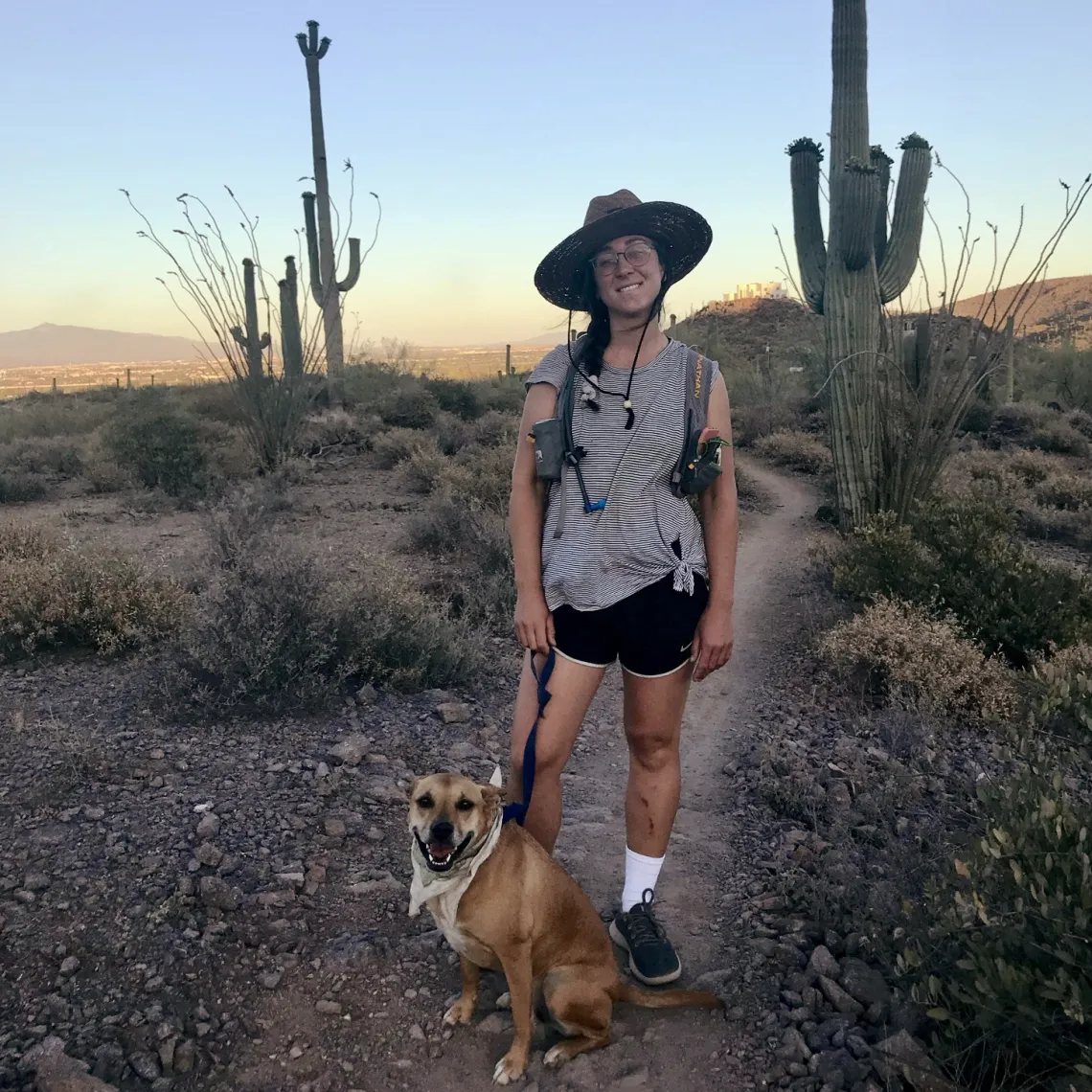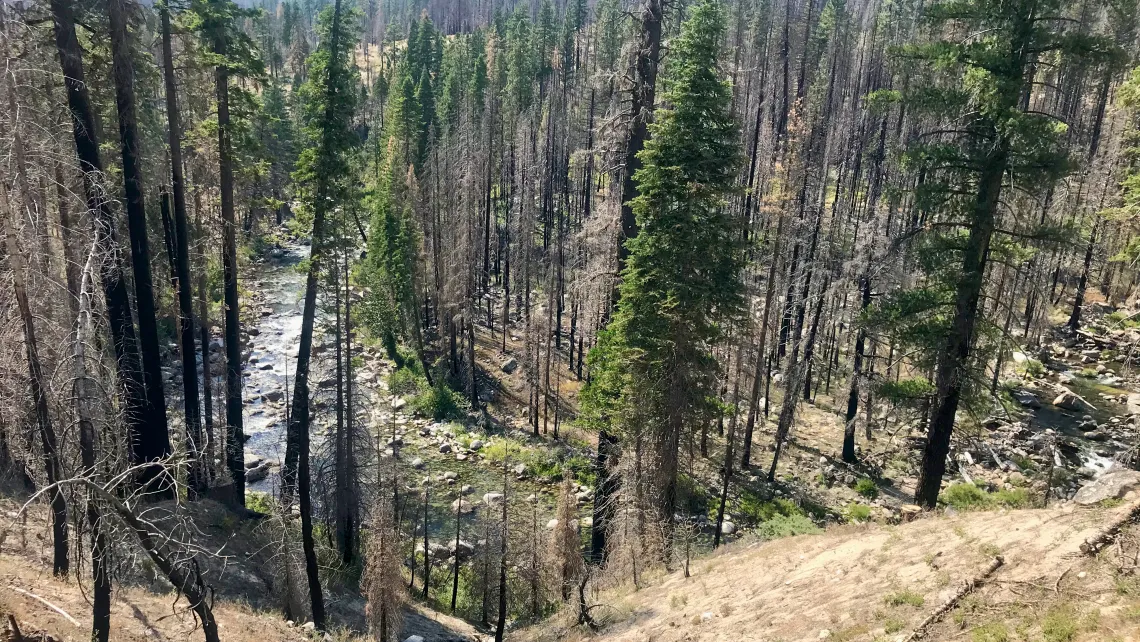Practicing Interdisciplinary Team Science in a Pandemic

Anna Murveit is a SW CASC NRWD Fellow and UArizona graduate student located in Tucson, Arizona.
Anna Murveit is a graduate student at the University of Arizona pursuing an MS at the School of Natural Resources and Environment and a Masters of Public Policy at the School of Government and Public Policy. Upon graduation this spring, Anna plans to continue her studies at UArizona by entering a doctoral program at the School of Geography, Development and Environment. Below are her reflections on her SW CASC Natural Resources Workforce Development (NRWD) Fellowship.
Over the past weeks, I have encouraged several graduate students at my institution to apply to the SW CASC NRWD Fellowship. Around this time last year, I decided to submit my application to this fellowship in hopes that I would gain exposure to interdisciplinary climate adaptation research and become part of a network of young researchers and professionals studying natural resources. I thought that I could offer my expertise in facilitating collaborative groups and apply this to the team science project. In addition, our research theme on landscape-scale disturbance is a topic that I’m personally affected by, as two years ago my family lost my grandparents’ cabin in the Sierra Nevada to the Dardenelles Fire. Five months into our year-long program, it is the perfect time to reflect on not only what I have gained, but also our team’s progress and what has helped us grow into the collaborative and creative group we have become.
We have accomplished a lot in our short time together. Our team has homed in on two initial research questions: 1) How do proactive fire management practices, including cultural and prescribed burning, impact future post-fire ecosystem recovery? and 2) what lessons can be learned about successes and barriers to Indigenous fire management programs and collaboration across landscapes? We have divided into sub-teams (described below) and enumerated methodologies. We have gathered datasets and created maps that visualize initial findings and inform which geographies we want to study more deeply. We have begun to develop guidelines for our outreach work and have identified and begun meeting with communities with which we’d like to collaborate. Most foundationally, we have built relationships and trust with one another, despite the challenges of the COVID-19 pandemic, which have prevented us from meeting one another in person. Looking back, I’m amazed to see how far we have come and I am proud of where we are today. Team science is difficult no matter what the circumstances and we have risen to the occasion thanks to supportive faculty and excellent training.
Our fellowship began with a two-day training in interdisciplinary and team science, an initiative of American Institute of Biological Sciences (AIBS) and taught by M. Kathleen Joyce & Associates. Early on, we learned about factors that make teams effective and Tuckman’s (1965) stages of team development: form, storm, norm, and perform. Tuckman’s lessons stayed with us. In the ground rules our fellowship cohort collaboratively drafted, we committed to embrace conflict as a sign of success. We see conflict as a sign of having progressed beyond the first stage of team development, when people are overly nice and therefore unproductive. When teams allow themselves to experience conflict, they can then work together to develop shared norms and grow as a team.
Our team hasn’t experienced any major conflicts, but there are healthy discussions where people aren’t afraid to disagree. For example, as our team began to solidify our project proposal, we saw two sub-teams emerging: one focused on qualitative social science methods and another focused on geospatial analysis. This would have the benefit of making our work more efficient as roles were clarified and team members could have more ownership over certain aspects of the project. However, one team member pointed out that we were limiting ourselves and our science by dividing up our project so cleanly by broad discipline. In fact, Indigenous epistemologies could help answer the “geospatial” research question on how landscapes treated with different forestry and fire management techniques recover from landscape-scale disturbance. And, geospatial analysis and climate science could be helpful in providing additional data for our “social science” case studies on communities practicing Indigenous fire management. Because this person spoke up, we ended up with a better solution and a more interdisciplinary project. Now, we have leads for each of the two research questions but all will be involved in supporting the other group, increasing the diversity and effectiveness of our research approach.
The training also provided useful guidance on what makes teams effective. Vogel et al. (2014) found that effective team processes can promote important components of teams: shared goals, mutual understanding, learning about each other’s disciplines, and frequent communication. Our trainer, Kathleen Joyce of M. Kathleen Joyce & Associates, stressed the importance of understanding the core competencies, both measurable and intangible, that are needed for a particular project. For me, it is very difficult to get to know a group of seven other students virtually, to gain an understanding of their knowledge, research skills, approach, attitude, and life experience. Due to the pandemic, we were challenged to design processes that would allow us to build relationships and collaborate virtually. And, rather than identifying a project and recruiting the appropriate team, we were working in reverse: first we had to get to know one another via zoom, and then we needed to design a research project that would suit our interests, priorities, and skill set.
I have been thrilled to see how our group has been able to grow relationships, build trust, and design a project that accounts for our unique expertise, skills, and perspectives. This has been accomplished through weekly Zoom calls and an active Slack channel. I have made an effort to directly message my peers, initiating sidebar conversations to facilitate friendships on which our teamwork is built. I have also noticed that our group has demonstrated a lot of accountability and commitment to the work, which builds trust and a culture in which we are each excited to put in the time to demonstrate what we can uniquely offer the group.
Our team has much that it still hopes to accomplish, but I am encouraged by our strong teamwork, which has been built on a commitment to direct communication and trusting relationships. I am grateful to be part of this fellowship, where I have already gained important experience in interdisciplinary climate adaptation research and a network of practitioners and scholars in my field. This spring, I decided to apply for a Ph.D. program in Geography at the University of Arizona to continue the type of work that I am doing with the fellows – societally relevant research that addresses the water resource challenges of the American Southwest under climate change. My experience in the NRWD Fellowship strongly influenced my decision to apply to this program. Thank you, SW CASC, for the opportunity to be a NRWD Fellow!

This year's theme for the NRWD Fellowship is management in the aftermath of landscape-scale disturbance. Anna and her family were directly impacted by a high-intensity wildfire in the Sierra Nevadas in August 2018. This photograph shows the view of the Clark Fork of the Stanislaus River from where her family's cabin once stood, taken in August 2020.

